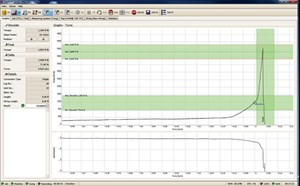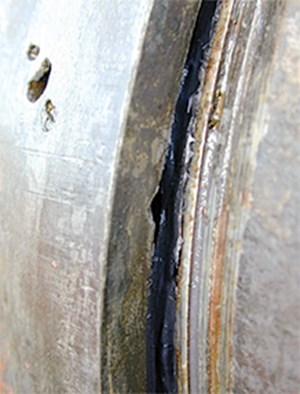Delivering well integrity through secure connections
From complex deepwater wells to conventional land operations, casing and tubing are essential aspects of wellbore integrity. Tubulars serve as the primary mechanical barrier that prevents flow into the environment or other formations. Meeting the demands of this challenge requires that the casing connections are secure and made up to OEM specifications, to prevent leaks that can result in connection failure when the well goes on production. By achieving a good connection the first time, operators can avoid costly interventions to replace tubing. Furthermore, in the event of an intervention, poor connections present the added risk of not being able to recover production rates to pre-leak levels.
Connection failures also shorten the functional life of the casing itself. With an estimated 90% of casing failures occurring at the connection, just one improper connection can lead to operational failure or serious consequences, including extended shut-ins and lost production value. With today’s low commodity prices, connection integrity is more critical than ever.
Premium connections can mean the difference between reliable, long-life production and high long-term operating costs. Connection integrity prevents thread-related damage, eliminates bending, shearing and deformation of the tubular running equipment, minimizes marking, optimizes gripping contact and eliminates stress-corrosion cracking, Fig. 1. To create gas-tight seals that can withstand high torque and bending stresses, connections must be made up to the required parameters quickly and safely, with minimal handling by rig crews.
A comprehensive connection-integrity strategy begins at the early stages of well planning and continues throughout the life of the well. To maximize efficiency, operators and equipment manufacturers should take a collaborative approach that combines mechanized rig systems and connection monitoring tools. The process includes tubulars that meet manufacturers’ makeup specifications and the use of physical connections that can be integrated into existing rig packages, to minimize disruption to ongoing operations while preserving valuable rig-floor space.
ESTABLISHING VIRTUAL CONNECTIONS
Technological advances have enhanced the capability of software platforms to establish virtual connections that enable real-time, remote monitoring of makeup/breakout data. This analysis helps ensure connection integrity over the life of the well and enhances project economics. For offshore wells, tubular management facilities monitor the connection makeup of double, triple and quad stands onshore and during the path prior to transport. This ensures that properly made-up connections are delivered rig-ready.
Remote real-time viewing of makeup facilitates access to connection data during tubular running. It also lowers logistical costs and enhances safety by reducing the number of personnel on the rig floor. Configurable data generated by the software, such as peak torque, shoulder torque, delta turns, shoulder slope and connection overlay, can be used to verify that the connections have been made up properly, and to take corrective action if necessary. The ability to store and manage the data also provides a trackable history of connection makeup.
CASE STUDY
Two connection monitoring and evaluation software tools were applied by an operator in Bangladesh. Using a connection-integrity strategy, the service provider collaborated with the producer to select the appropriate tools to meet engineering objectives. The project involved tubing connection makeup in four remote onshore gas development wells, with a total of 10 sections across all four wells. Tubulars included four 9 5/8-in. production casing strings, two lower completion strings, two upper completion strings and two monobore completion strings, with more than 1,000 connections.
Prior to implementing the software, the operator had experienced inconsistent Internet connectivity and bandwidth issues due to the remote location of the wells. Additionally, in previous casing-running operations, there had been a number of discussions and challenges surrounding the accepted connections procedures. Specifically, the operator required a method to achieve quicker access and viewing of the connection makeup process, enabling immediate replacement of any connections found to be unacceptable.
To solve these issues, the service provider deployed the JAMPro NET software system, which allows remote, real-time monitoring and control of torque/turns data. This gives joint-analyzed makeup (JAM) operators the ability to use a high-speed data network connection at an onshore center to control makeup operations at a rig hundreds of miles away. Data transmission between the operations center and the rig travels at a minimum speed of 10 Mb/sec.
Remote, real-time monitoring. The remote capability of the system reduces required rig personnel to two people for a 24-hr operation, and enables third-party evaluation without experts on location. The system facilitates telephone or two-way radio communication with rig floor crews and live video feed of rig floor activity. For enhanced monitoring, operators can use histograms and trend analysis to enter torque-turn data into well logs.
Because of the internet issues experienced previously, the software was customized to establish a local area network connection to a portable laptop at an onsite office. This enabled the company man to view, supervise and monitor the acceptance of the tubular connections from his office.

For data analysis, the operator implemented the TorkPro 3 monitoring software, which acquires and processes torque/turns data from a real-time measuring system, then monitors, evaluates and reports torque data for makeup and breakout of all tubing and casing connections, Fig. 2. The software, which can be updated periodically to the latest pipe manufacturer specifications, integrates data of previously-built stands with the final string-connection documentation, thus enabling data for all string connections to be stored in the proper order in one database.
The system also enables real-time analysis of the makeup process and evaluates connections for acceptance or rejection, minimizing the response times to connection problems. Job reports are generated, and saved in a secure cloud for retrieval after makeup. Reports provide graph signatures, such as shoulder turns, delta turns, shoulder-slope calculations and continuous graph overlays. Used in conjunction with a statistics screen, the reports enable quick comparisons of graphical data to identify unusual trends in relation to connection profiles.
Together, the software systems create a virtual connection, from which anyone can monitor connection makeup operations. For the Bangladesh operation, the torque/turns software monitoring software delivered precise, automated, color-coded graphs, which allowed for efficient, accurate and error-free analysis of multiple connection criteria instantaneously. The graphs also provided a quick comparison of real-time job data with the requirements of the connection manufacturer.
The software’s auto-evaluation feature reviewed the connections for acceptance or rejection with comments, further reducing reliance on personnel and preventing human evaluation errors when confirming the multiple criteria in a short time period.
VALUE DELIVERED
During the four-well job, more than 170 operational hours were logged, with no connection integrity or operational issues. Implementation of the software systems provided remote, real-time monitoring of tubular makeup and ensured that the 1,493 connections met acceptance criteria for well integrity. The customized solution resulted in issue-free performance, enabling the client to produce the wells as planned without unanticipated delays or costly workovers.
As operators strive to establish and maintain production and cost-efficiency in increasingly complex formations, integrity remains the underlying objective at every stage of a well’s life. Properly made-up casing connections are an important foundation of every well integrity strategy to enhance safety, reduce risks and cost, and ensure long-term value. ![]()
- What's new in production (February 2024)
- Using data to create new completion efficiencies (February 2024)
- U.S. operators reduce activity as crude prices plunge (February 2024)
- U.S. producing gas wells increase despite low prices (February 2024)
- U.S. oil and natural gas production hits record highs (February 2024)
- Dallas Fed: E&P activity essentially unchanged; optimism wanes as uncertainty jumps (January 2024)
- Applying ultra-deep LWD resistivity technology successfully in a SAGD operation (May 2019)
- Adoption of wireless intelligent completions advances (May 2019)
- Majors double down as takeaway crunch eases (April 2019)
- What’s new in well logging and formation evaluation (April 2019)
- Qualification of a 20,000-psi subsea BOP: A collaborative approach (February 2019)
- ConocoPhillips’ Greg Leveille sees rapid trajectory of technical advancement continuing (February 2019)



